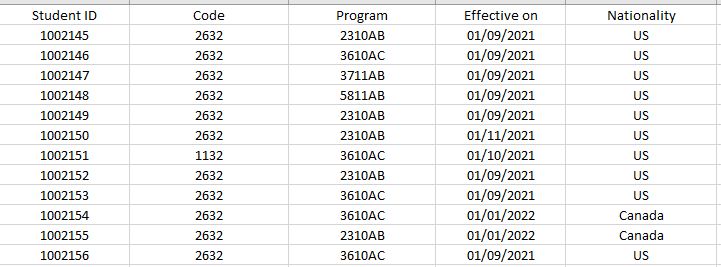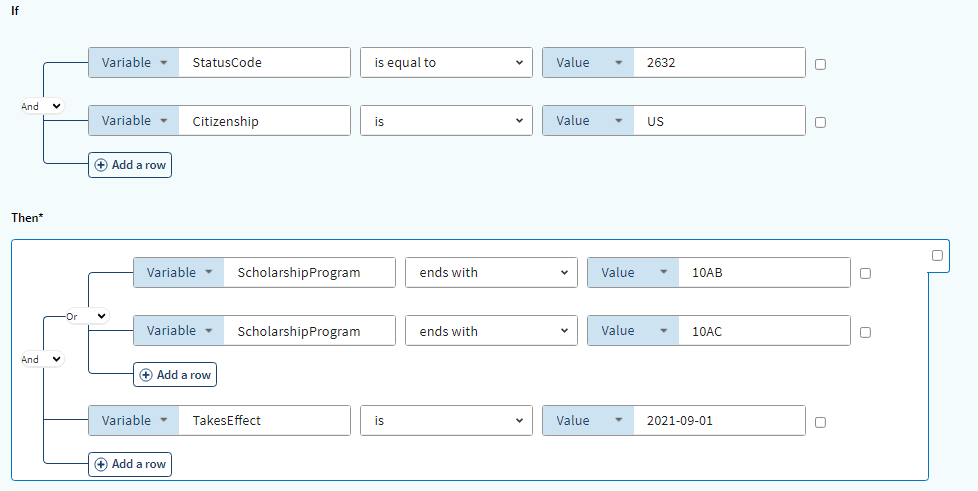Creating a data quality rule in basic mode
About this task
In this example, you are working at the University. You noticed some datasets have been mixed up and you want to check that the correct scholarship programs have been granted to the correct students.
The data quality rule validates that if the students have the US citizenship and their status code is 2632, then the students have been granted a scholarship program taking effect on September 1st, 2021 and whose code ends with 10AB or 10AC.
Here is a sample of the dataset:


Procedure
What to do next
Did this page help you?
If you find any issues with this page or its content – a typo, a missing step, or a technical error – let us know how we can improve!

